The Huawei P30 & P30 Pro Reviews: Photography Enhanced
by Andrei Frumusanu on April 18, 2019 9:00 AM EST- Posted in
- Mobile
- Smartphones
- Huawei
- P30
- P30 Pro
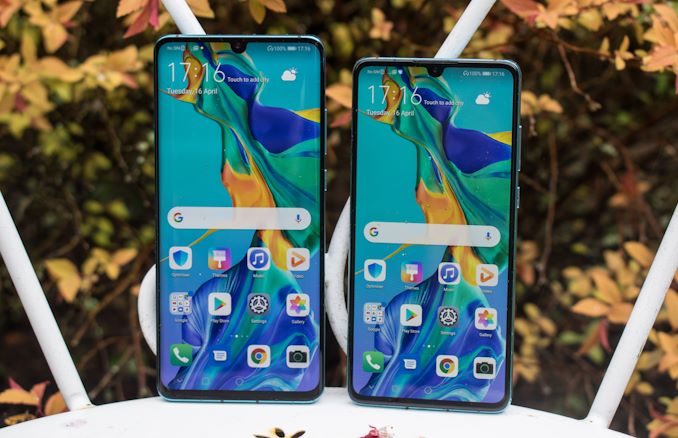
The last year has been extremely exciting period for Huawei and its products: Starting with the P20, the company’s flagships have been truly transformative in terms of their camera photography capabilities. The P20 and P20 Pro last year were extremely intriguing products for the industry, as they ushered in the first step towards an ever more prevalent aspect of modern cameras: computational photography.
Huawei had pioneered the technique to bring new innovative use-cases such as the introduction of multi-frame combination mechanism for low-light capture (a.k.a. Night Mode), which really raised the bar and lead the way in terms of what we expect smartphone cameras be capable of in low light. Huawei didn’t only innovate in terms of software, but also using quite exotic hardware camera sensors, such as the 40MP units in the P20 Pro and the Mate 20 Pro.
This year, Huawei doubled down on the photography aspects of its predecessors with the introduction of the new P30 and P30 Pro. The two new flagships pick up where the P20s left off, and provide yet again a new set of generational improvements to the camera setups. This year, along with software optimisations, we yet again see big changes in the hardware of the cameras, with the introduction of an industry first RYYB 40MP main camera sensor, as well as the addition of an even more exotic 5x telephoto camera module that is enabled via a prism mirror and a 90° sensor layout.
Naturally, the P30 and P30 Pro also bring overall improvements and redesigns in the other aspects of what makes them flagship smartphones, with larger batteries, new screens, and overall design revamps. Let’s dive into the specs:
| Huawei P30 Series | ||||
| P30 | P30 Pro | |||
| SoC | HiSilicon Kirin 980 2x Cortex-A76 @ 2.60 GHz 2x Cortex-A76 @ 1.92 GHz 4x Cortex-A55 @ 1.80 GHz |
|||
| GPU | Mali G76MP10 @ 720MHz | |||
| DRAM | 6/8GB LPDDR4X | 8GB LPDDR4X | ||
| Display | 6.1" OLED 2340 x 1080 |
6.47" OLED 2340 x 1080 |
||
| Size | Height | 149.1 mm | 158.0 mm | |
| Width | 71.36 mm | 73.4 mm | ||
| Depth | 7.57 mm | 8.41 mm | ||
| Weight | 165 grams | 192 grams | ||
| Battery Capacity | 3550mAh Rated 3650mAh Typical |
4100mAh Rated 4200mAh Typical |
||
| Wireless Charging | - | Qi | ||
| Rear Cameras | ||||
| Main | 40MP f/1.8 RYYB sensor 27mm equiv. FL |
40MP f/1.6 OIS RYYB sensor 27mm equivl. FL |
||
| Telephoto | 8MP f/2.4 3x Optical zoom 80mm equiv. FL |
8MP f/3.4 5x Optical Zoom 135mm equivl. FL |
||
| Wide | 16MP f/2.2 Ulta wide angle 17mm equivl. FL |
20MP f/2.2 Ultra wide angle 16mm equivl. FL |
||
| Extra | - | Time-of-flight sensor | ||
| Front Camera | 32MP f/2.0 | |||
| Storage | 128 / 256 (P30 Pro only) + proprietary "nanoSD" card |
|||
| I/O | USB-C 3.5mm headphone jack |
USB-C | ||
| Wireless (local) | 802.11ac Wave 2 Wi-Fi Bluetooth 5.0 LE + NFC |
|||
| Cellular | Kirin 980 Integrated LTE (Category 21/18) DL = 1400 Mbps 4x4 MIMO 3x20MHz CA, 256-QAM (5CA no MIMO) UL = 200 Mbps 2x2 MIMO 1x20MHz CA, 256-QAM |
|||
| Splash, Water, Dust Resistance | IP53 (no water resistance) |
IP68 (water resistant up to 1m) |
||
| Dual-SIM | 2x nano-SIM | |||
| Launch Price | 6+128 GB: 749€ | 8+128 GB: 999€ 8+256 GB: 1099€ |
||
Both the P30 and P30 Pro are powered by HiSilicon’s Kirin 980 chipset. By now the 7nm SoC should be familiar with most of our readers, as we had an in-depth review of the silicon in the review of the Mate 20 and Mate 20 Pro. The combination of Arm’s Cortex A76 CPU cores in the new 7nm manufacturing node made for some impressive generational gains, with the new chipset’s CPUs still tracking ahead of the new generation competition such as the Snapdragon 855 or the Exynos 9820. GPU performance, while not as leading as the competition, is still adequately competitive.
Versus the Mate 20’s, the P30’s increase the amount of DRAM available. The P30 sees 6GB of RAM while the P30 Pro comes with 8GB of LPDDR4X. Both models come with 128GB of base capacity NAND storage.
Like the P20s before, the P30s this year differ in terms of their form-factor. The P30 Pro is the larger sibling in a 73.4mm wide form-factor, while the P30 is smaller with 71.36mm width. The screen sizes are respectively 6.47” and 6.1”, however with the screen aspect ratios in the last few years becoming more elongated as well as bezels shrinking, it’s no longer a very representative way to describe phone form-factors.
The P30 Pro comes with a 4200mAh battery while the smaller P30 sports a 3650mAh unit. It’s again to be noted that the actual design capacities here are 100mAh less, a quite annoying development in recent years in how manufacturers advertise their battery capacities.
At the centre of the P-series (which apparently stands for Photography) is of course the camera, or better said, the cameras. While on the P20s we saw different camera sensors between the smaller and bigger Pro models, the P30s both come with the same new 40MP sensor. The new module manufactured by Sony is the first of its kind in a commercial smartphone by employing a new RYYB colour filter structure, as opposed to the classical RGGB Bayer filter. Replacing the green subpixel with a yellow one promises to increase light sensitivity by 30%. In the past we’ve seen attempts with RGBW sensors, however they’ve all ended up in failure and never saw wide adoption. Huawei here promises a better implementation as it’s able to fully take advantage of the RYYB filter structure from sensor to SoC ISP without having to reconvert the data-stream to a regular Bayer stream, something which currently would be unique in the space.
The 40MP main sensor on the P30 comes in an f/1.8 aperture lens module, while the P30 Pro uses a wider f/1.6 lens. Furthermore the P30 Pro also employs OIS on the main sensor, something that’s been notoriously lacking in Huawei smartphones in the last couple of years.
Both P30s have wide-angle modules, and much like on the Mate 20’s these two differ in terms of their sensors. The P30 uses a 16MP f/2.2 unit with a 17mm equivalent focal length, while the P30 Pro has a 20MP f/2.2 unit with a slightly wider 16mm equivalent focal length. Huawei introduced the wide-angle sensors on the Mate 20 and Mate 20 Pro and they’ve been fantastic additions to the camera setups.
Finally, Huawei raised the bar in terms of zoom/telephoto module capability. The new P30 contains a similar 8MP f/2.4 3x / 80mm equivalent module as on the P20 Pro and the Mate 20 Pro, so there’s not apparent chance here in terms of the paper specifications.
The P30 Pro on the other hand has a special new telephoto/zoom module, reaching an optical magnification factor of 5x, or a 135mm equivalent focal length. Usually such higher magnification factors weren’t available in smartphones due to limitations on the camera module thickness; you either had to have a very large bump, or you had to employ a tiny sensor. Huawei here does neither, and instead is positioning the camera sensor at a 90° perpendicular position. This was achieved through a prism mirror. The drawback of this system is that the aperture is quite limited at only f/3.4, which should result in less light.
Finally, the P30 Pro comes with a ToF sensor, however much like on the Honor View20 we reviewed in January, it’s of extremely limited use.
The P30s, much like the P20s, are distinguished by their vertical camera setups on the upper side of the phones. Again, both phones maintain the form-factor of their predecessors, however the P30 Pro does get notably longer than the P20 Pro.
P30 Design
The P30s, much like the P20s, are distinguished by their vertical camera setups on the upper side of the phones. Again, both phones maintain the form-factor of their predecessors, however the P30 Pro does get notably longer than the P20 Pro.
For both the P30 and P30 Pro, the front is now distinguished by a dew-drop notch design in an otherwise near bezel-less smartphone. Huawei was able to minimise the front plastic rim between display and metal frame, and was able to completely get rid of it on the back glass panel, which now is slightly curved and flowing to the sides.
On the bottom of the phone we find the main speaker grill as well as a 3.5mm headphone jack.
The top merely has a microphone hole and is otherwise bare. What is odd of the new P30 design is the flat top and bottom frames – I don’t think I remember of any smartphone ever employing such a design. It’s not really hindering in any way, but it is quite odd in terms of feel and contrary to what one is used to in a smartphone.
The right side sees both the power button as well as the volume rocker button. Placement is identical to the P20 and it’s a good design for a phone of this size. The left side sees the nanoSIM+Nanomemory slot.
P30 Pro Design
The P30 Pro’s design differs a lot more from its predecessor. Here the new P30 Pro is a lot more akin to the Mate 20 Pro than the P20 Pro, sharing the same curved screen and back glass design. The screen design, besides the curved edges, is identical in design with the P30, sharing the same dew-drop notch design for the camera.
What is different though and not immediately visible is that the P30 Pro doesn’t actually have an ear-piece speaker. Huawei instead opted for a piezoelectric actuator speaker integrated into the screen. I’m not too convinced of this implementation as first of all it doesn’t serve as a stereo speaker (Unlike the G8’s integrated display speaker), and second of all I fail to see the value as it also produces lesser quality call audio.
Because the phone is curved both on the front and back, there’s no space for a tray on the sides of the phone. Like on the Mate 20 Pro, the SIM tray is found on the bottom side. Also, unfortunately like on the Mate 20 Pro, Huawei opted to leave out the 3.5mm headphone jack on the more expensive model. Again I frankly find this stupid that the company would opt to leave out a feature on the higher-end model.
The top of the phone is similar to the P30, however we see the addition of an IR transceiver.
The edges of the P30 Pro flow seamlessly on the sides, giving an almost identical feel to the Mate 20 Pro. I actually love this design as it’s simply vastly more ergonomic, and it makes the larger phone feel much smaller than it really is. Build quality, like on the Mate 20 Pro, is also excellent.
If I had one gripe about the design of the P30s, it’s their weight. Particularly the 192g of the Mate 20 Pro is very heavy and on the top-end of the scale, without even being the biggest phone around. The P30 Pro offers an IP68 rating, while the P30 offers a regular IP53 rating.



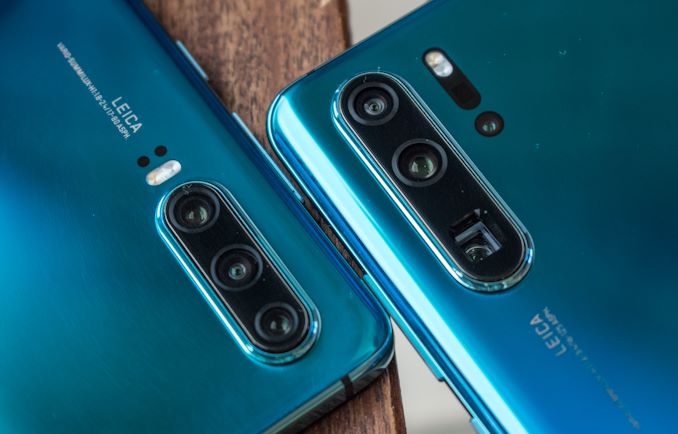

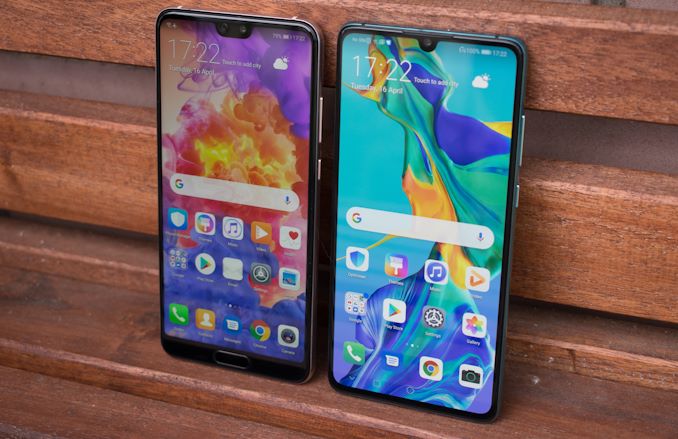
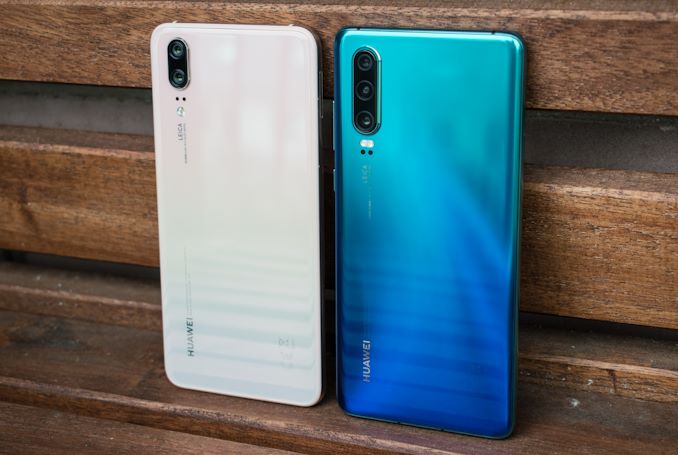

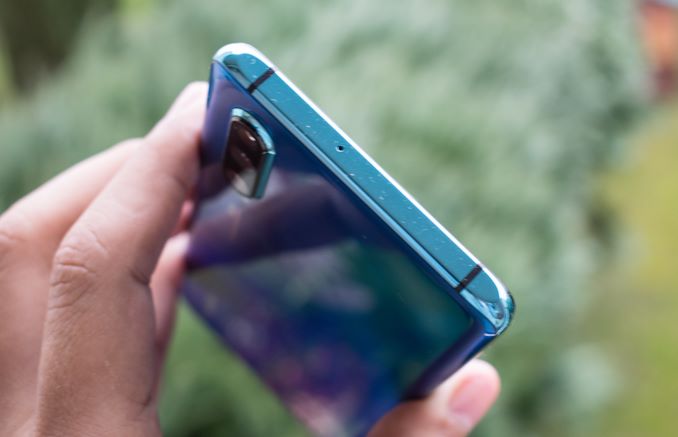
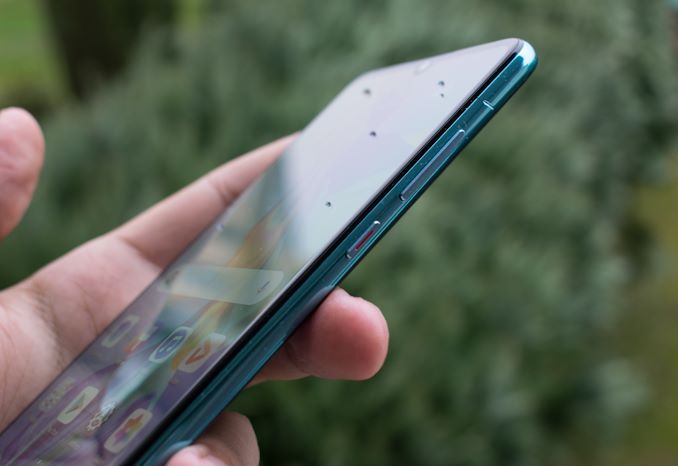
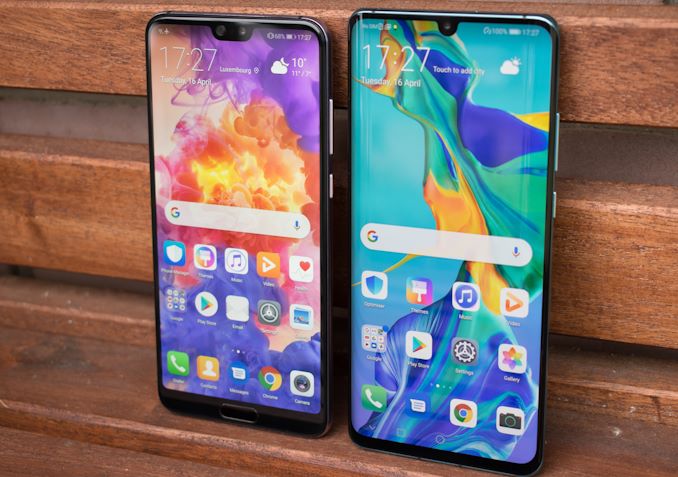
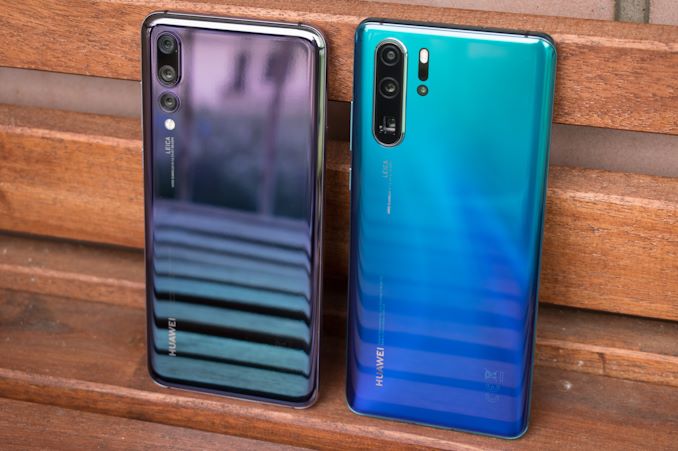

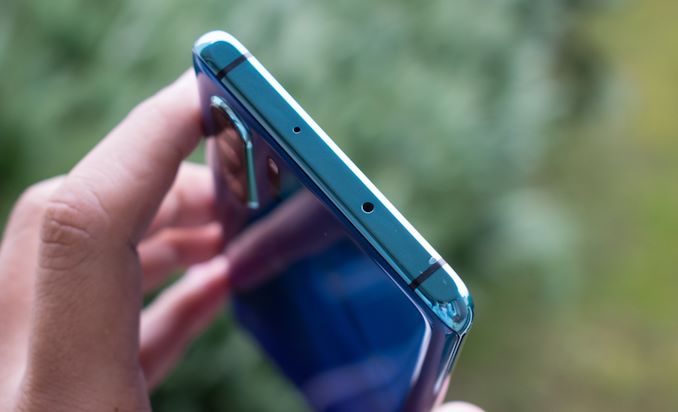
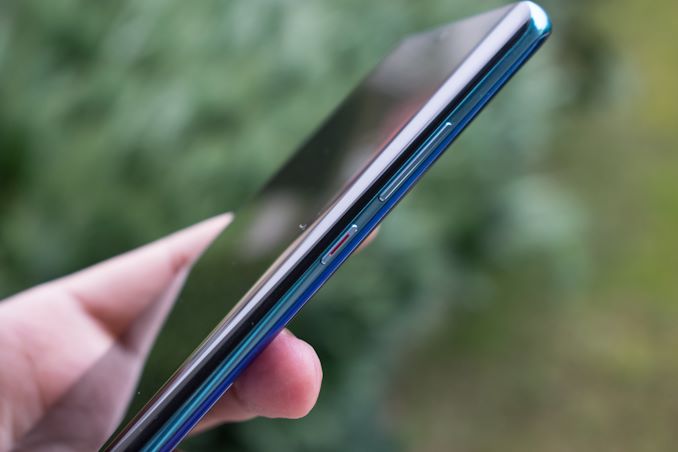








85 Comments
View All Comments
Quantumz0d - Thursday, April 18, 2019 - link
Good camera review, their auto mode looks good at night but the low light photography in smartphone arena is heavily faked. Be it Google insane algorithm for creating unnatural light or th damn Huawei night mode with HW. I think its too fake and perhaps they do have advantages in some situations but going from a dark room to a lit room is bad in my book.Next up the stupid curved glass copy they did from Samsung needs shaming. Plus its a waste that distortion of image is horrible and the damn construction is weak, see Jerry rig for it.
Then the worst parts - NanoSD ? WTF, please call them out for this, proprietary storages ? That's anti consumer, I use my SGS with 200GB SD card yes the 10Yr old phone with replaced battery and Fat32 works. And same in my iPods and V30S, and it works in PC without any stupid gimmicks or bloat.
Finally Andrei, I know your contribution to Samsung Exynos S9 disaster, it was only possible because it allows Bootloader unlock. That's the most powerful feature of Android and its principles of GNU GPL.
This Huawei junk is blocking access to that officially and in India I read the service centers demand DL for their Honor subsidiary, XDA portal people sold their soul to Huawei and OnePlus now their contract expired for OP and Huawei I guess. This is another massive hole in Huawei devices. I have every doubt about the firmware and SoCs from this CPC company I would really wish to have a Bootloader unlock for all their portfolio subsidiaries and themselves. Its bad, no ownership choice is horrible given how their EMUI blocks lot of stuff and notorious for its control over background processes.
You should include that in your reviews, please.
Thank you.
Quantumz0d - Thursday, April 18, 2019 - link
Also thank you for mentioning the 3.5mm jack and the stupid mono speaker in 2019. LG is Audio champion since a long time and hopefully they will retain that with their top class ESS Sabre implementation moving ahead. Also to note, LG and their new G8 has zero bumps which is a feat along with the Crystal Sound they call. Looking forward for piece.zeeBomb - Thursday, April 18, 2019 - link
You guys should take a look of MrWhoseTheBoss and his videos about this amazing phone. Such a shame you can't get it in carriers in the Americas, but man oh man.Ian Cutress - Thursday, April 18, 2019 - link
>You guys should take a look of MrWhoseTheBoss and his videos about this amazing phone.Any specific reason? You haven't exactly said why.
zeeBomb - Monday, May 6, 2019 - link
My bad. Sorry for the late reply too, he talks primarily about the sensor of the P30 Pro and its usefulness in Low Light. Just a suggestion to take a look.bogda - Thursday, April 18, 2019 - link
I think this statement: "...Huawei continues the senseless design choice of including a headphone jack on the smaller model while skipping it on the larger and more expensive P30 Pro.", makes much more sense if it is changed just a little bit into:"Huawei continues the senseless design choice of skipping a headphone jack on larger and more expensive P30 Pro while including it on the smaller model."
Awful - Thursday, April 18, 2019 - link
Great review but still missing half the picture when it comes to the camera. Time-of-flight sensor? Graduated blur based on depth map? Portrait/face lighting? People are the most photographed and most interesting subjects. Even if it's a mannequin with a wig for repeatability!s.yu - Friday, April 19, 2019 - link
Portrait lighting has been gimmicky for a few generations now. Regarding ToF, IIRC only the Nokia 9 has the proper implementation. Still there are pixel grade deviations and some people aren't satisfied. Personally if I were to add fake bokeh that precision would be enough for me.Awful - Saturday, April 20, 2019 - link
Yeah, they weren't really meant to be separate concerns- they're all factors contributing to portraits. I.e. how the exposure is chosen, how the depth is mapped to the bokeh/blue, how edge detection is done and masked for blurring, how AI/ML is used to make adjustments etc. All great computational photography stuff...that this review is silent on.Lau_Tech - Friday, April 19, 2019 - link
Hi Andrei, as a s10 exynos owner, was interested to see your updated comparison pics between the snapdragon and exynos. Looking at the pics from ur S10 review and now, it seems to me that the gap has closed substantially especially in daytime photos? What do you think?